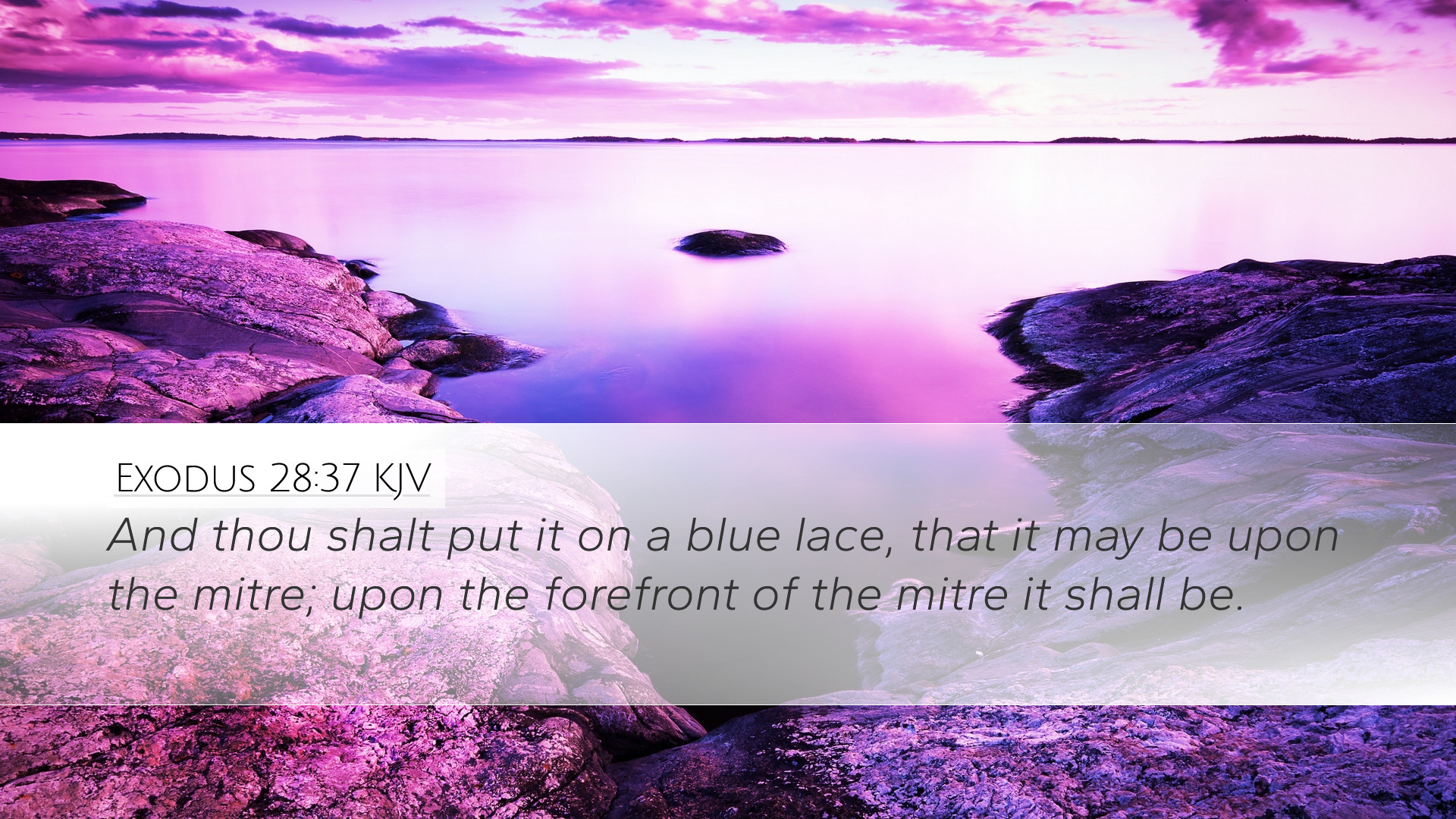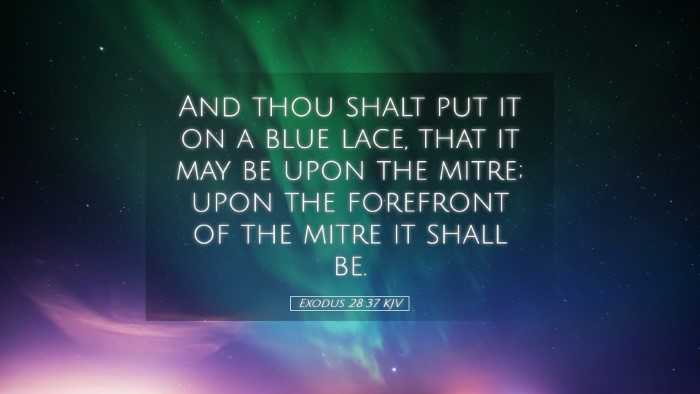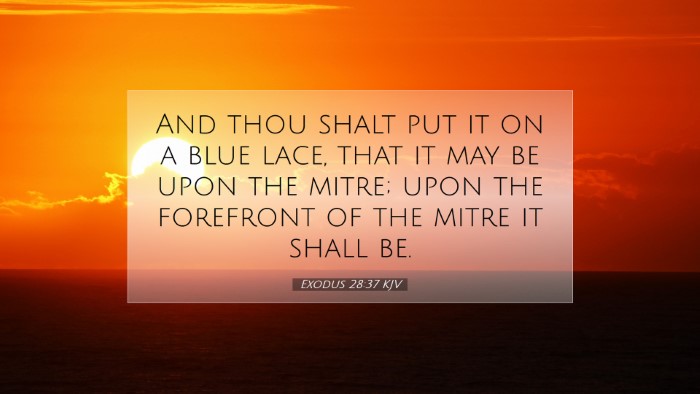Commentary on Exodus 28:37
Exodus 28:37 states: "And thou shalt put it on a blue lace, that it may be upon the mitre; upon the forefront of the mitre it shall be." This verse is part of the instructions given by God to Moses regarding the attire of the priests, specifically the high priest, Aaron. The significance of the attire reflects the holiness and the responsibilities that come with priestly duties.
Historical Context
In understanding Exodus 28:37, it is crucial to grasp the historical and cultural context of the Israelites during their wilderness wanderings. The priestly garments served as symbols of holiness and the role of the mediator between God and the people. The significance of the high priest’s attire is compounded by its design and the materials used, which were 'consecrated' to serve sacred purposes.
Significance of the Blue Lace
The directive to place the inscription upon a "blue lace" serves both a practical and symbolic purpose. Blue is often associated with heaven and divine revelation. In the commentaries, Henry emphasizes that this color represents the celestial realm, linking the high priest’s ministry with the divine. The use of blue as part of the priestly garments symbolizes the connection between God and His people.
- Divine Authority: The lace signifies authority derived from God. The high priest acts in the presence of God and on behalf of the people, showcasing the intersection of humanity and divinity.
- Covenantal Reminder: The blue color serves as a reminder of the covenant between God and Israel, illustrating the faithfulness of God and the obligation of Israel to keep His commandments.
- Symbol of Purity: Blue can also reflect purity. This highlights the moral and spiritual purity required of the priests as they represent the people before God.
The Mitre's Forefront
The placement of the inscription "upon the forefront of the mitre" underscores the visibility and prominence of the high priest's role. Adam Clarke stresses that this was not merely decorative but intentional, emphasizing that the high priest bears the names of the children of Israel before the Lord continually. This act signifies intercession and the personal nature of each individual’s relationship with God.
Implications for Priesthood
This instruction also has broader implications for the understanding of priesthood within both the Old and New Testaments. As theology evolves through the biblical narrative, the New Testament reveals Christ as the ultimate high priest who fulfills the roles and responsibilities outlined in the Levitical legislation.
- Christ as High Priest: Just as the mitre bore the names of the tribes, Christ, our high priest, carries our names before the Father. Hebrews 7:24-25 expresses the eternal nature of Christ’s intercession.
- Believers as Priests: 1 Peter 2:9 calls believers a "royal priesthood," indicating that we, too, carry the responsibilities to represent God to the world and intercede for others in prayer.
Theological Reflections
Theologically, Exodus 28:37 invites reflection on the accessibility of God through appointed mediators. Matthew Henry notes that the priestly garments, especially the mitre with its inscription, remind us of God’s love and commitment to His people. The priest stood as a representation of the people before God, and the design of the garments was intentionally ornate to reflect the majesty and glory of God.
Applications for Today
Pastors and theologians might draw various applications from this verse in contemporary ministry:
- Holiness in Ministry: Like the high priest, those in ministry today are called to uphold a life of holiness as they lead others towards God.
- Being a Vessel for Intercession: Recognizing the call to intercede for others, leaders should understand their role in prayerful advocacy—lifting up their communities before God.
- Symbol of Hope: Just as the blue lace points to heaven, pastors can encourage congregants to look beyond earthly struggles towards the heavenly promise secured by Christ.
Conclusion
In conclusion, Exodus 28:37 serves as a rich passage within the greater narrative of Scripture that communicates the beauty and weight of priestly responsibility and the connection between God and His people. The incorporation of the blue lace signifies a visual representation of divine authority, purity, and intercession. For contemporary Christians, this verse continues to underscore the importance of living a life that reflects God's holiness, engaging in intercessory prayer, and embracing the identity as a chosen generation called for a purpose.


